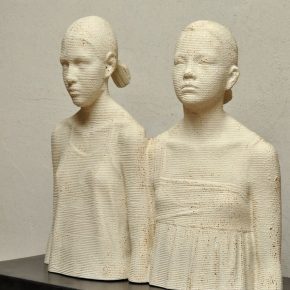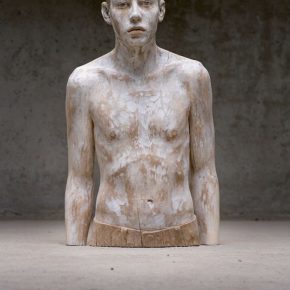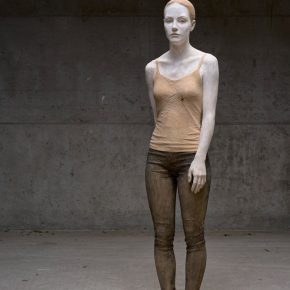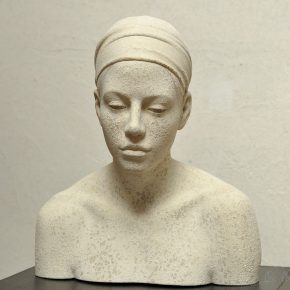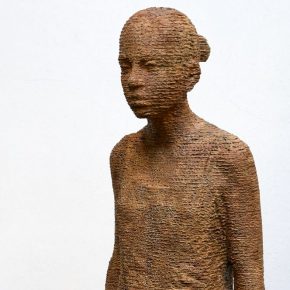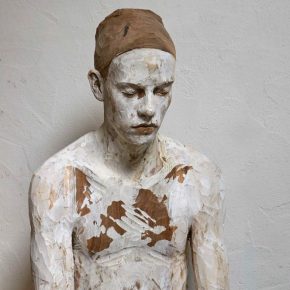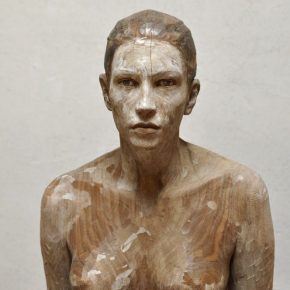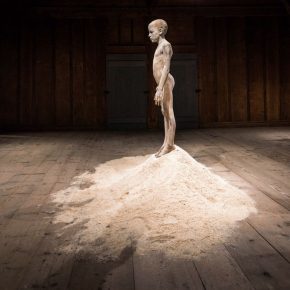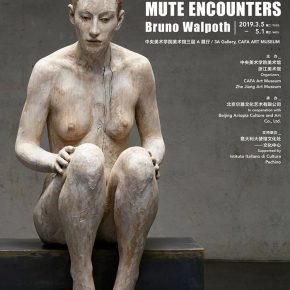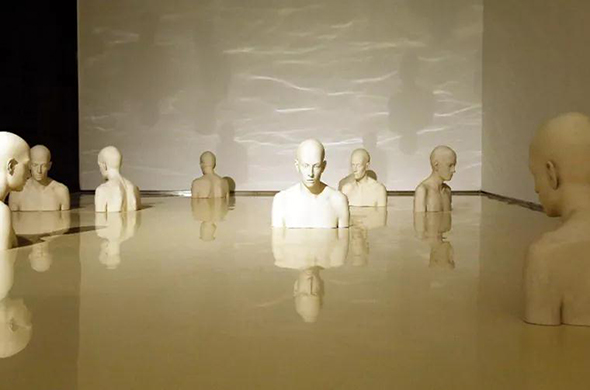
Co-organized by the CAFA Art Museum and Zhejiang Art Museum, “Mute Encounters: Bruno Walpoth” was unveiled at the CAFA Art Museum. The exhibition has initiated the tour exhibition of Bruno Walpoth in Asia and it showcases over 30 sculptures and paintings including not just new works that the artist has prepared for this exhibition but there are also paintings, bronze sculptures and paper sculptures that were rarely seen in other exhibitions. In addition, this exhibition also presents a live recording of the artist’s creative process which provides an opportunity for audiences to comprehensively know about his creative development.
Franco Amadei, Cultural Counsellor of the Italian Embassy in Beijing, Zhang Zikang, Director of the CAFA Art Museum, Ying Jinfei, Deputy Director of the Zhejiang Art Museum, Zhang Wei, Deputy Director of Department of Sculpture at CAFA, Wang Chunchen, Deputy Director of CAFA Art Museum, Prof. Xiao Li from the Wood Sculpture Studio of the Department of Sculpture at CAFA, Shu Wenjing, one of the curators and coordinators for this exhibition as well as artist Bruno Walpoth attended the opening ceremony. Gao Gao, Assistant to the Director of CAFA Art Museum, chaired the ceremony.
Zhang Zikang, Director of the CAFA Art Museum, talked about the significance of this exhibition as it kicked off the series of international exhibitions to be held at CAFA Art Museum in 2019. With the support of the Italian Embassy and the Zhejiang Art Museum, this exhibition could be successfully held in Beijing. Mr. Walpoth has persisted in explorations how an artist can inject contemporary emotions into traditional techniques, while adding vitality to traditions, he also strikes deep into the minds of people. Moreover, his works have considerable reference for Chinese art on the stage of contemporary transformation in thoughts as he has inspired people to recognize again the narrative boundaries of inherent materials.
Franco Amadei, Cultural Counsellor of the Italian Embassy in Beijing, expressed that this exhibition promoted the cultural and artistic exchanges between China and Italy. Italian legacy of art and culture especially art from ancient Rome to Renaissance, the Baroque period, have been recognized and researched by the world. However, there are not enough introductions for modern and contemporary Italian art, the Cultural Center of Italian Embassy hopes to get the support from CAFA Art Museum, the most authoritative art institution in China, to strengthen the cultural dialogue of contemporary Italian art in China.
Ying Jinfei, Deputy Director of the Zhejiang Art Museum talked about the preparatory process of this exhibition. He also mentioned that the Italian wood sculpture actually originates from religion, through the efforts of the artists represented by Bruno Walpoth, the modern transformation of Italian wood sculpture from traditions have been accomplished.
“After entering the exhibition hall, I can immediately feel the ‘silence’, which is a quite but very powerful expression,” said Zhang Wei, Deputy Director of the Department of Sculpture at CAFA. What has been conveyed by Bruno’s work is the most tranquil beauty in human nature, from which we can find influences on the artist from medieval woodcarvings and those from early Renaissance. But none of these are so called influences from themes, materials and techniques, but the influences from the humanistic spirit or the eternal proposition of mankind.
As for Bruno, he believes that a smoother communication should express through sculptures or in the sculptural process rather than languages. In his hometown, woodcarving has a historical tradition which has developed over 300 hundred years. Such an art category has always occupied a quite important position, but its significance has been mainly reflected in the craftsmanship. In recent decades, woodcarving has entered an art field instead of traditional crafts category. Actually in the Italian sculpture traditions, most materials or expressive languages are stone, marble, bronze, but wood is less known if compared with them. However through the efforts of the artist, the value of woodcarving has been discovered and examined again.
Text edited by Wu Jing/CAFA Art Museum
Translated and edited by Sue/CAFA ART INFO
Photo Courtesy of the Artist and CAFA Art Museum


